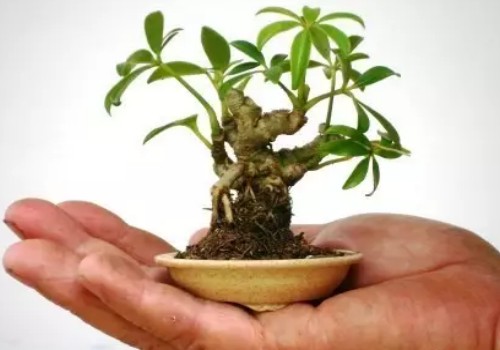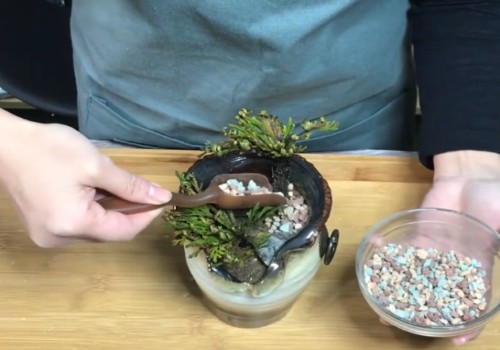How to make Selaginella bonsai
Selaginella officinalis is a kind of evergreen plant which is also called "reviving grass from death". It has the characteristics of short plant type, drought tolerance, shade and dampness, so it is very suitable for bonsai. However, many potted friends are worried about how to make a good pot of Selaginella bonsai, so how to make Selaginella bonsai? Today, the editor will share with you the method of making Selaginella bonsai.
When making Selaginella bonsai, many potted friends always feel that it is not easy to feed. In fact, this kind of plant is very easy to feed. After all, its vitality is very tenacious. The main reason is that we can provide it with a suitable growth environment to meet its growth needs. Feeding is not a big problem. And Selaginella officinalis found in the field generally grow on the cliffs, the growth environment is also very bad, since all can survive, indicating that its vitality is not generally tenacious.
Since we are making Selaginella officinalis as a bonsai, we first need to choose a flowerpot that is simple and elegant. At the same time, considering that it likes to be wet but not resistant to waterlogging, it is also required to have a water outlet at the bottom of the flowerpot and spread it with a sponge pad to prevent the basin soil from leaking out with the current, and only need to discharge the excess water.
For Selaginella bonsai suitable for planting with what basin soil, in general, we choose ordinary sandy loam rich in humus. Because Selaginella likes the moist basin soil environment, the watering requirements are not particularly strict, as long as it is not excessive, and such basin soil is more fertile, loose and breathable, and the drainage is also very good, so it is more suitable for raising Selaginella officinalis.
Before potting the Selaginella officinalis plant, we need to simply shape it properly, then put the plant into the flowerpot according to a certain shape, and then fill the space in the pot with pre-prepared potted soil and gently squeeze it a little bit. But the covered soil is generally slightly lower than the rim of the basin, because this can prevent the water from overflowing when pouring water.
Selaginella officinalis has a very strong tolerance to drought. Although it curls up into a ball when it is hit by drought, it will stretch out again when it is watered, which is very amazing. And it also likes shade, shade-resistant, does not need to receive light directly, only provides a little scattered light to meet the needs of light. At the same time, it is also relatively resistant to barren, after planting even without fertilization, can also survive, in time is rough management, but also can let its normal growth.
But in order to achieve the ornamental effect of bonsai, we still need to buy some embellishments for it after we have finished it. You can take some fresh moss and spread it on the surface of the basin soil to make it look more natural and beautiful. And careful basin friends will find that its branches are often covered with moss, which shows that it likes to be moist. Therefore, after planting, we should often spray water to the basin soil, branches and leaves to moisturize. Otherwise, the plant will curl up and dormant when it is affected by drought, thus reducing the ornamental value of bonsai.
Time: 2019-05-25 Click:
- Prev

Can goose palm wood make bonsai?
Goose palm wood is a kind of ornamental plant which is evergreen all the year round, which has the characteristics of enduring shade and liking semi-shade, so it is easy to maintain and manage. Generally put it in a place with good indoor ventilation and bright light, or put it on the balcony, it can play a good role in embellishment. So, can goose palm wood make bonsai? actually
- Next

How to make Selaginella bonsai
Selaginella officinalis, also known as reviving grass, has very strong vitality, but its branches and leaves are evergreen and the plant type is low, so it is a good material for making bonsai. So, how to make cypress bonsai? Today, the editor would like to share with you the method of making Selaginella bonsai. I hope it will be helpful to you.
Related
- Fuxing push coffee new agricultural production and marketing class: lack of small-scale processing plants
- Jujube rice field leisure farm deep ploughing Yilan for five years to create a space for organic food and play
- Nongyu Farm-A trial of organic papaya for brave women with advanced technology
- Four points for attention in the prevention and control of diseases and insect pests of edible fungi
- How to add nutrient solution to Edible Fungi
- Is there any good way to control edible fungus mites?
- Open Inoculation Technology of Edible Fungi
- Is there any clever way to use fertilizer for edible fungus in winter?
- What agents are used to kill the pathogens of edible fungi in the mushroom shed?
- Rapid drying of Edible Fungi

